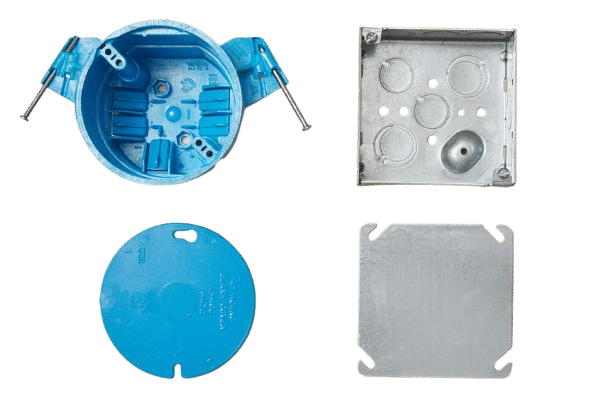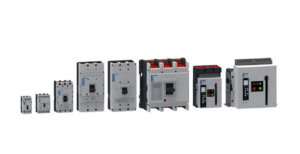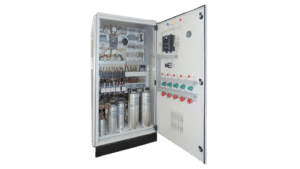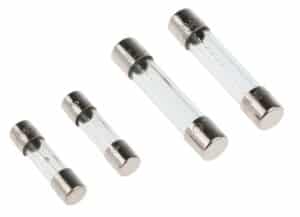When embarking on any electrical project, whether a simple home renovation or a complex commercial installation, one of the crucial components you will encounter is electrical boxes. These fundamental elements, much like Types of Electrical Panels and types of circuit breakers, play a pivotal role in ensuring the safety and efficiency of Electrical Infrastructure. This guide delves into the different types of electrical boxes, highlighting their significance, diversity, and applications.
Electrical boxes serve as protective enclosures for wiring connections, safeguarding them from external elements and reducing the risk of electrical fires. Similar to types of electrical outlets, they are essential for organizing and managing wires, ensuring that electrical systems remain accessible for maintenance and aesthetically pleasing. The types of electrical boxes you choose can vary based on the application, environment, and specific requirements of your project.
Understanding the various types of electrical boxes is not just necessary for professionals but also invaluable knowledge for DIY enthusiasts and homeowners. With a wide range of options available, selecting the appropriate electrical box can be daunting. Our comprehensive guide on types of electrical boxes aims to simplify this process, helping you make the best choices for your specific needs, while considering the broader context of electrical infrastructure and security, including types of alarm systems.
What are Electrical Boxes?
Electrical boxes, a cornerstone in any electrical installation, are protective enclosures that house and safeguard electrical connections. Their primary purpose is to prevent electrical fires by containing sparks or short circuits that may occur within the connections. Moreover, these boxes provide a structured and organized way to manage various electrical wires and connections, ensuring they are accessible for maintenance, inspection, or future modifications.
The types of electrical boxes are diverse, each designed for specific scenarios and requirements. They range from simple junction boxes, typically used to connect wire splices, to more specialized ones like outlet or ceiling boxes, designed for specific fixtures or wiring setups. The choice of an electrical box is dictated by several factors, including the type of construction (commercial, residential, industrial), the nature of the electrical circuit, and the environmental conditions it will be exposed to.
In essence, electrical boxes are not just mere containers; they are a critical component ensuring the safety, functionality, and efficiency of electrical systems. Their correct selection and installation are paramount in any electrical project, highlighting the importance of understanding the different types of electrical boxes available in the market.
Types of Electrical Boxes 1: Junction Boxes
Working Principles of Junction Boxes
Junction boxes are fundamental in electrical wiring systems, primarily serving as a secure enclosure for wire splices or connections. They are designed to protect wire connections from external damage, prevent electrical fires by containing sparks or shorts, and keep wire connections organized. The working principle of a junction box is straightforward: it provides a safe and accessible space for wires to be securely connected and housed away from environmental hazards.

Advantages and Disadvantages of Junction Boxes
Advantages:
- Safety: Junction boxes protect electrical connections from external damage and reduce fire risks.
- Organization: They keep wire connections neat and organized, simplifying maintenance and troubleshooting.
- Accessibility: These boxes provide easy access to electrical connections for future modifications or repairs.
Disadvantages:
- Space Constraints: Larger wire bundles may require bigger or multiple junction boxes, posing challenges in confined spaces.
- Installation Complexity: Proper installation requires understanding of electrical codes and standards.
Characteristics of Junction Boxes
- Material: Typically made from metal or plastic, depending on the application and environment.
- Size and Shape: Available in various sizes and shapes to accommodate different numbers and types of wires.
- Installation Location: Can be installed in walls, ceilings, or hidden areas, provided they remain accessible.
Use Cases for Junction Boxes
- Residential and Commercial Wiring: Commonly used in both home and commercial electrical systems for connecting room wiring.
- Outdoor Installations: Certain types designed for outdoor use, featuring weatherproof characteristics.
- Complex Electrical Circuits: Essential in settings with multiple wire connections, such as large buildings or industrial facilities.
Types of Electrical Boxes 2: Outlet Boxes
Working Principles of Outlet Boxes
Outlet boxes are specialized types of electrical boxes designed to house electrical outlets or switches. They are integral in providing a secure and stable platform for these fixtures, ensuring that the electrical connections are safely enclosed and protected from external factors. The primary function of an outlet box is to securely hold electrical outlets or switches in place while safeguarding the wiring connections that power them.

Advantages and Disadvantages of Outlet Boxes
Advantages:
- Protection: Ensures the safety of electrical connections for outlets and switches.
- Support: Offers sturdy support for outlets and switches, preventing movement or damage.
- Code Compliance: Meets electrical codes and standards for safe installations.
Disadvantages:
- Size Limitations: Limited space can restrict the number of outlets or switches installed.
- Installation Requirements: Requires careful planning and adherence to specific installation guidelines.
Characteristics of Outlet Boxes
- Materials: Constructed from durable materials like metal or heavy-duty plastic.
- Sizes: Available in various sizes to accommodate different types of outlets and switches.
- Types: Includes remodel boxes for existing walls and new construction boxes for new builds.
Use Cases for Outlet Boxes
- Residential Buildings: Widely used in homes for electrical outlets and light switches.
- Commercial Spaces: Essential in office buildings, retail spaces, and other commercial environments.
- Remodeling Projects: Remodel-specific boxes are ideal for retrofitting outlets and switches in existing walls.
Types of Electrical Boxes 3: Ceiling Boxes
Working Principles of Ceiling Boxes
Ceiling boxes are designed to support light fixtures or ceiling fans, providing a secure mounting point and housing for electrical connections. These boxes are strategically placed in the ceiling, where they hold the weight of the fixture while connecting it to the power source. The design of ceiling boxes ensures that they can support not only the electrical connections but also the physical load of the mounted fixtures.

Advantages and Disadvantages of Ceiling Boxes
Advantages:
- Support and Stability: Strong enough to support the weight of ceiling fixtures, including fans and lights.
- Safety: Protects electrical connections from damage and reduces the risk of electrical fires.
- Versatility: Suitable for various types of ceiling fixtures.
Disadvantages:
- Weight Limitations: Each ceiling box has a specific weight limit, which restricts the type of fixture that can be installed.
- Installation Complexity: Requires precise installation to ensure safety and stability, especially for heavy fixtures.
Characteristics of Ceiling Boxes
- Material: Typically made from robust materials like metal or reinforced plastic to support heavier loads.
- Design: Available in different designs to accommodate various fixture types and installation requirements.
- Load Rating: Each box has a specific load rating, indicating the maximum weight it can safely support.
Use Cases for Ceiling Boxes
- Residential Lighting: Commonly used in homes for ceiling light fixtures and fans.
- Commercial Lighting: Essential in commercial spaces for overhead lighting systems.
- Decorative Fixtures: Ideal for hanging chandeliers or other decorative lighting in homes or commercial settings.
Table of Comparison for 3 Types of Electrical Boxes
| Feature/Type | Junction Boxes | Outlet Boxes | Ceiling Boxes |
| Primary Use | Connecting wire splices, organizing wire connections | Housing electrical outlets or switches | Supporting light fixtures or ceiling fans |
| Material | Metal, plastic | Metal, heavy-duty plastic | Metal, reinforced plastic |
| Installation | Walls, ceilings, hidden areas | Walls (new construction, remodeling) | Ceilings |
| Size & Shape | Various sizes and shapes for different wire numbers | Various sizes for different types of outlets | Designed to accommodate fixture types and weight |
| Load Capacity | Not typically load-bearing | Not load-bearing | Rated for specific weights, critical for fans/lights |
| Advantages | Organizes and protects connections; reduces fire risk | Sturdy support for outlets/switches; code compliant | Supports heavy fixtures; versatile for many designs |
| Disadvantages | Limited by space and installation complexity | Size limitations; strict installation requirements | Weight limitations; complex installation for safety |
| Ideal For | Residential and commercial wiring; outdoor setups | Residential buildings; commercial spaces; remodels | Residential lighting; commercial lighting; decorative fixtures |
This table provides a concise comparison of junction, outlet, and ceiling boxes, highlighting their distinct features and applications, and aiding in choosing the right type for specific electrical projects.
Takeaways
In summary, understanding the various types of electrical boxes is crucial for anyone involved in electrical work, from professional electricians to DIY enthusiasts. Each type – junction boxes, outlet boxes, and ceiling boxes – has its specific purposes, advantages, and installation requirements. Junction boxes are versatile for wire connections, outlet boxes are essential for electrical outlets and switches, and ceiling boxes provide support for ceiling fixtures. The right choice of electrical box not only ensures the safety and efficiency of your electrical installations but also helps in complying with electrical codes and standards. By considering the specific needs of your project and the unique characteristics of each type of electrical box, you can ensure a safe and successful electrical installation.
FAQs
- What factors should be considered when selecting types of electrical boxes?
When selecting an electrical box, consider the type of electrical fixture you are installing, the location (indoor or outdoor), the material of the box (metal or plastic), size and load capacity, and compliance with local electrical codes.
- Can different types of electrical boxes be used interchangeably?
Not all types of electrical boxes are interchangeable. Each type is designed for specific applications and load capacities. For instance, a ceiling box is designed to support the weight of a ceiling fixture, which a junction box may not be suited for.
- How do the installation requirements vary for different types of electrical boxes?
Installation requirements vary based on the type of box. Junction boxes may need to be easily accessible for future wiring changes, outlet boxes require precise placement for switches and outlets, and ceiling boxes need secure mounting to support the weight of fixtures. Always follow manufacturer guidelines and local building codes.




